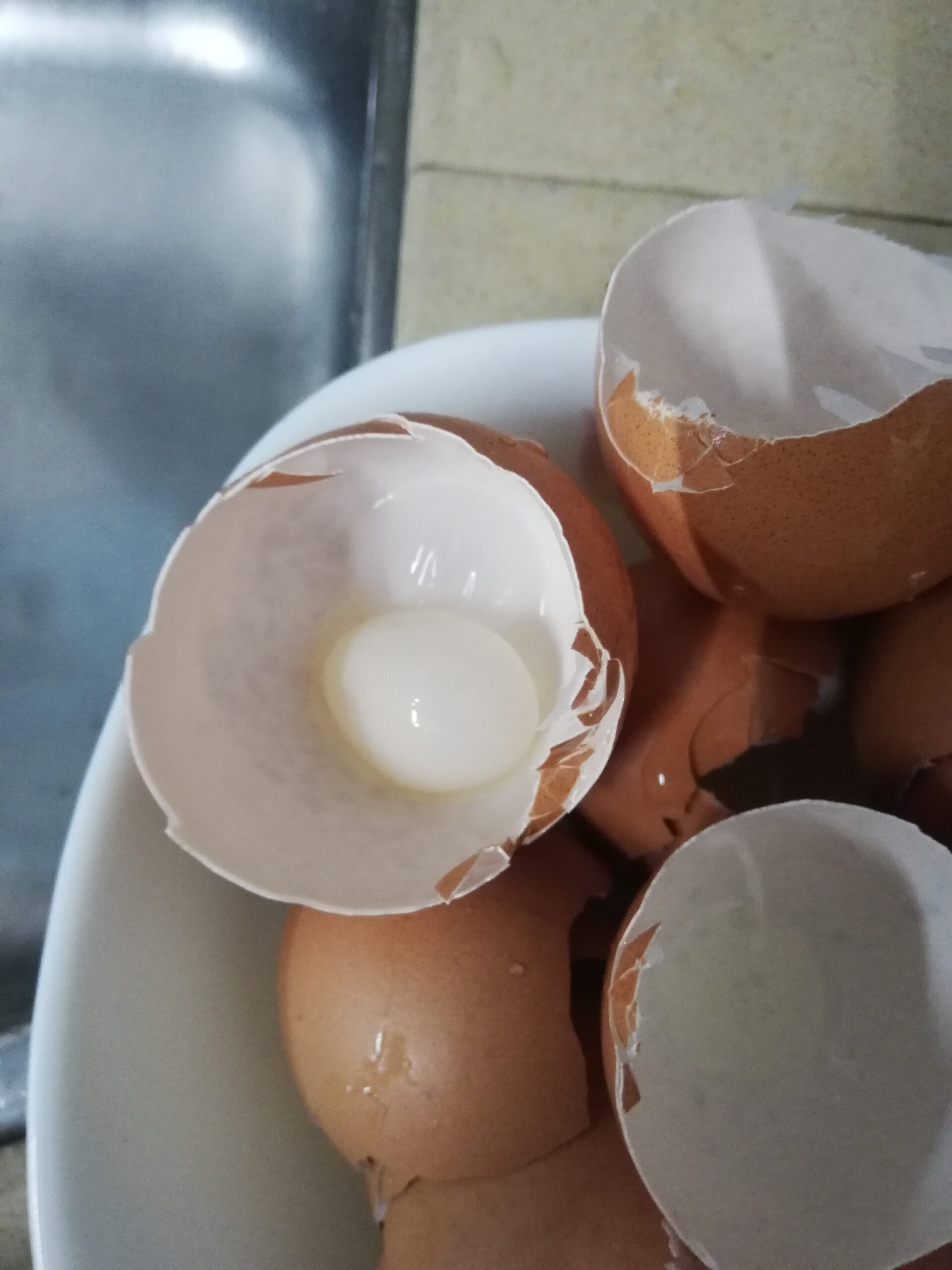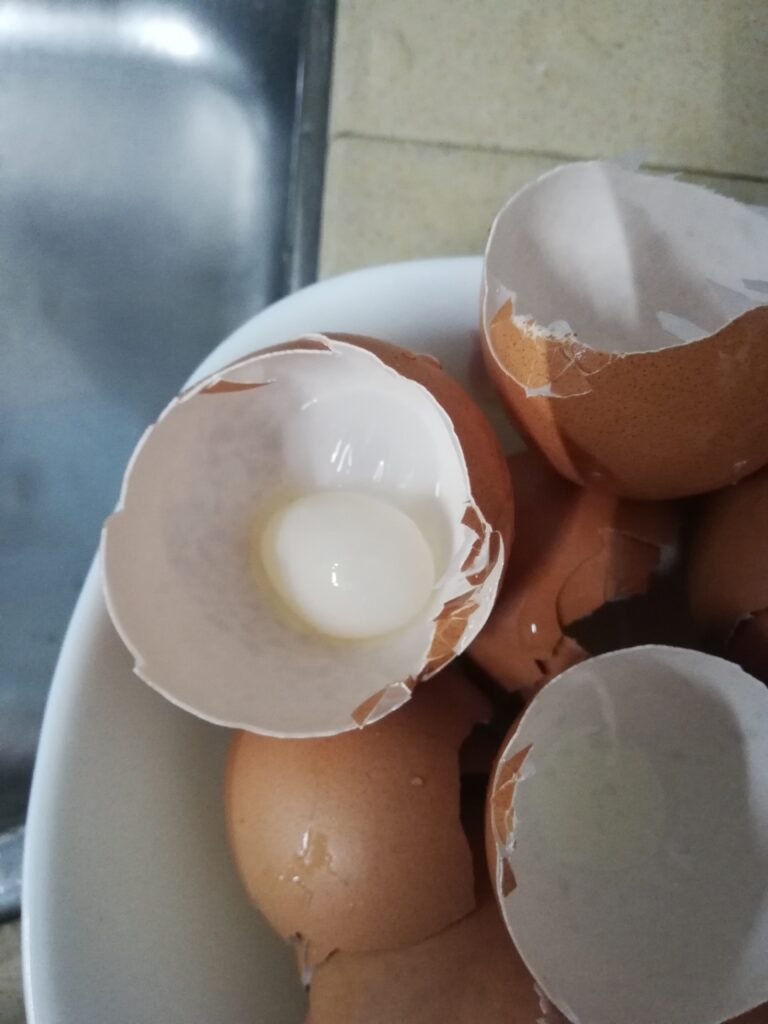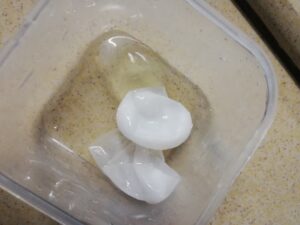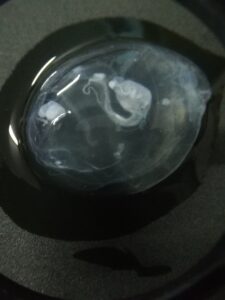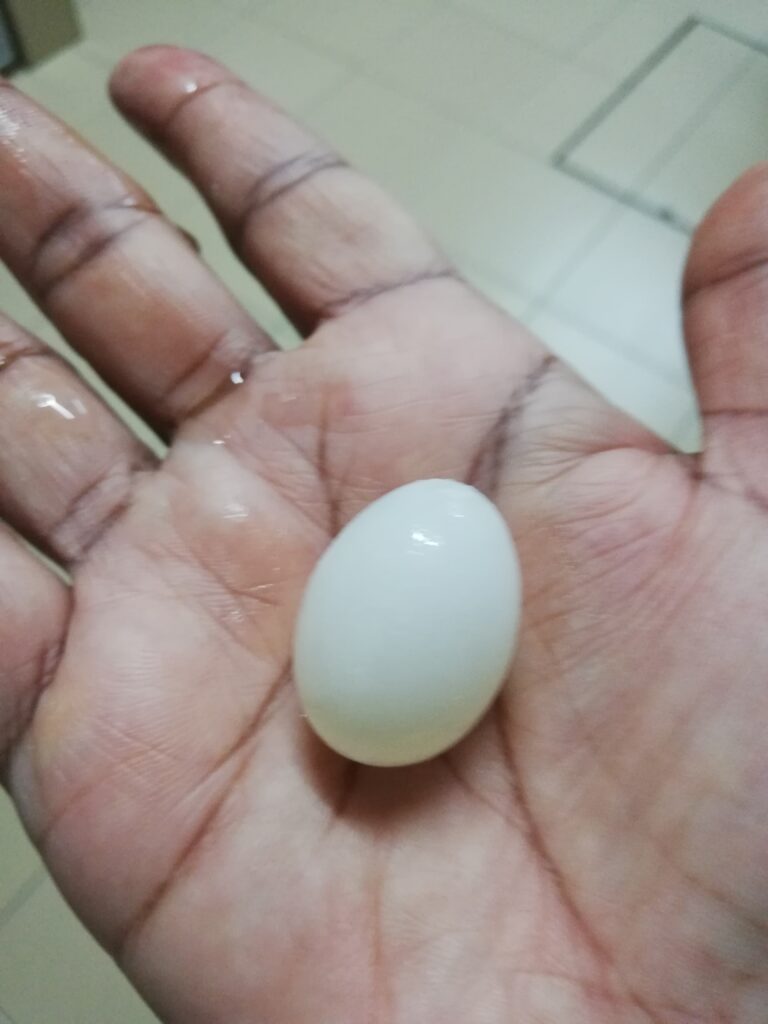
Recently, I discovered a little white egg nestled inside an ordinary-sized egg. It consisted of a thick, translucent gel-like fluid contained within a soft double membrane. There was no sign of yolk, but a close examination revealed an embryonic structure within the content.
This phenomenon is called counter-peristaltic contraction. Under normal circumstances, a hen releases an oocyte into the oviduct every 18–26 hours. The oocyte travels down the oviduct and takes up to 25 hours to gradually form into an egg.
Once the egg is laid, a subsequent oocyte is released. However, sometimes a second oocyte is released by the ovary before the first egg has completed its journey through the oviduct. The release of a second oocyte causes a contraction that forces the first oocyte back up to the top of the oviduct. This oocyte then attaches to the newly released oocyte and travels back down the oviduct, where albumen and a shell deposit over both oocytes, forming a hard-shelled egg. The first oocyte remains in the egg as a partially developed egg.
This egg-in-an-egg phenomenon is not wildly uncommon, but it generally involves two fully formed eggs- making this sight quite a rare one!
Prepared by:
Sumathy Raghavan

